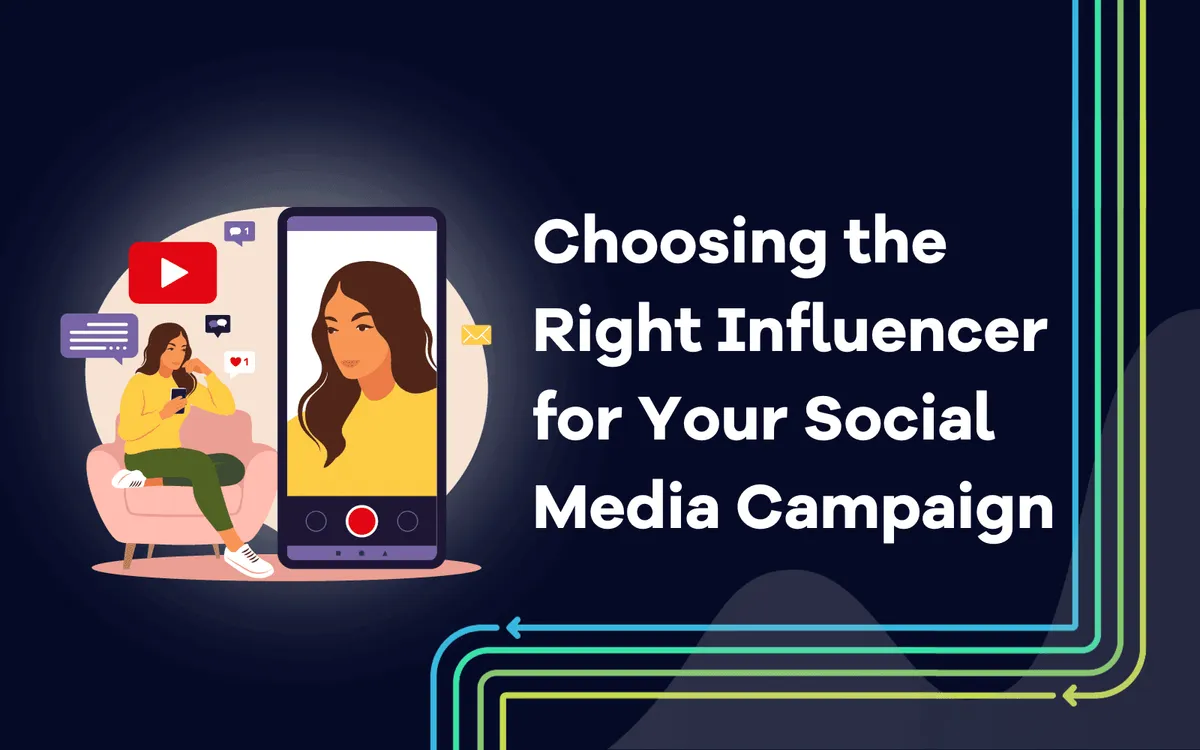
Micro-Influencers vs. Macro-Influencers: Choosing the Right Influencer for Your Social Media Campaign

Nayana Bhasurasen
October 31, 2023
Explore the key differences between micro-influencers and macro-influencers to make a viable decision for your social media campaign.
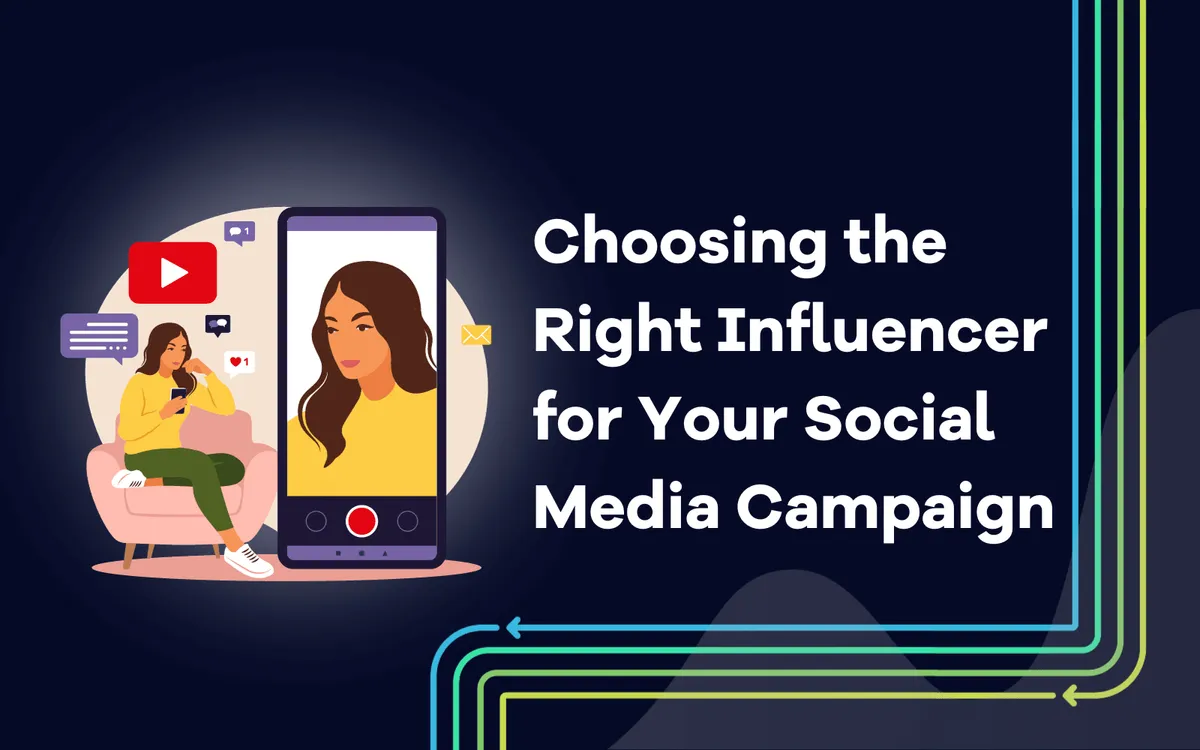
As businesses increasingly turn to influencer marketing to connect with their target audiences, it is crucial to identify whether to collaborate with micro-influencers or macro-influencers. Each category brings unique advantages and drawbacks, making the decision pivotal for brands seeking to maximize their online presence.
In this article, we’ll compare the merits of micro-influencers and macro-influencers to help you navigate the complex terrain and select the perfect partner for your social media campaign. So, let’s get started!
Understanding Micro-Influencers
Micro-influencers are social media content creators who typically have a smaller but highly engaged and niche audience. They are defined by their relatively modest follower count, normally ranging from 1,000 to 100,000 followers.
More than 82% of consumers are inclined to make a purchase based on the recommendations of a micro-influencer. They are known for their authenticity, strong engagement with their audience, and genuine passion for their chosen topic. These influencers often have a more intimate and personal connection with their followers, resulting in higher engagement levels compared to macro-influencers or celebrities.
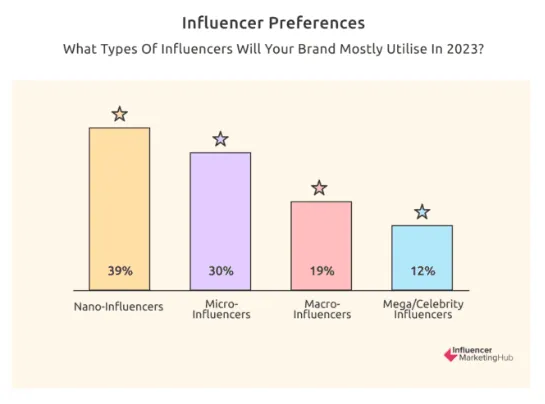 Source: Influencermarketinghub
Source: InfluencermarketinghubUnderstanding Macro-Influencers
Macro-influencers are individuals who possess a substantial online following and wield significant influence within their respective niches or industries. Typically, macro-influencers have tens of thousands to several million followers on social media platforms like Instagram, YouTube, or Twitter.
Brands often collaborate with macro-influencers to promote their products or services, leveraging the influencer's reach and credibility to reach a broader and more engaged audience. These influencers are seen as authoritative figures within their niche or industry, making them valuable partners for marketing campaigns and brand partnerships.
Here are some notable macro influencers:
Cristiano Ronaldo: One of the world's most famous soccer players, Cristiano Ronaldo, has a massive following on social media. He shares updates about his career, personal life, and endorsements.
Beyoncé: As a globally renowned musician and performer, Beyoncé has a strong presence on social media. She often uses Instagram to showcase her fashion and promote her music.
PewDiePie: A popular YouTuber, PewDiePie is known for his gaming content and commentary. He has millions of subscribers and is influential among the gaming community.
Kim Kardashian: A reality TV star, businesswoman, and socialite, Kim Kardashian has a massive following on platforms like Instagram and Twitter. She's known for her fashion and beauty ventures.
Oprah Winfrey: Media mogul Oprah Winfrey has a significant presence on social media and uses her platforms to promote her projects, share inspirational content, and engage with her audience.
Factors to Consider When Choosing an Influencer
Choosing the right influencer for your campaign can increase the chances of a successful partnership that not only meets your marketing objectives but also resonates with your target audience and aligns with your brand values.
Campaign Goals and Objectives
Before selecting an influencer for your marketing campaign, it's crucial to define your campaign goals and objectives. Are you aiming to increase brand awareness, drive website traffic, boost sales, or promote a specific product or service? The influencer you choose should align with these objectives.
For instance, if your goal is to generate sales, consider influencers with a track record of driving conversions through their content. Then, incorporate it with the proper sales prospecting tools for better outcomes.
Target Audience and Demographics
Understanding your target audience is fundamental when selecting an influencer. Analyze the demographics, interests, and behaviors of your ideal customers. The influencer's followers should closely match your target audience to ensure your message resonates effectively. Consider factors such as age, gender, location, interests, and values when evaluating the influencer's audience demographics.
Brand Alignment and Relevance
Choose an influencer whose content and values align with your brand. It's essential that their personal brand and messaging harmonize with your company's identity and messaging. This alignment will make the influencer's endorsement feel more authentic and credible to their audience.
For example, if your brand is eco-friendly, collaborating with an influencer known for sustainability can enhance your brand's credibility in that niche.
Budget Considerations
Your budget plays a significant role in influencer selection. Different influencers charge varying rates based on their reach, engagement rates, and niche expertise. Determine how much you're willing to allocate to the influencer campaign and look for influencers whose fees fit within your budget.
Keep in mind that the return on investment (ROI) should also be considered, as working with a more expensive but highly effective influencer may yield better results.
Advantages of Micro-Influencers
Leveraging micro-influencers in your marketing strategy can offer several advantages:
Authenticity and Relatability
Micro-influencers often have a more genuine and authentic connection with their followers. Their content feels less staged and more like a personal recommendation, which can enhance trust and engagement.
Followers perceive micro-influencers as relatable individuals, making it easier for them to connect on a personal level. This relatability can lead to higher conversion rates for brands.
Cost-effectiveness
Micro-influencers typically charge lower fees for collaborations compared to macro or celebrity influencers. This cost-effectiveness allows brands with limited budgets to leverage influencer marketing effectively.
Branding can be done with multiple micro-influencers simultaneously, diversifying their reach and message without overspending on a single influencer.
Niche Expertise and Focused Reach
Micro-influencers often specialize in specific niches or industries. Their deep knowledge and passion for their niche make them a valuable resource for followers seeking information and recommendations in that area.
Brands can tap into the highly targeted and engaged audience of micro-influencers, ensuring that their products or services reach the most relevant potential customers.
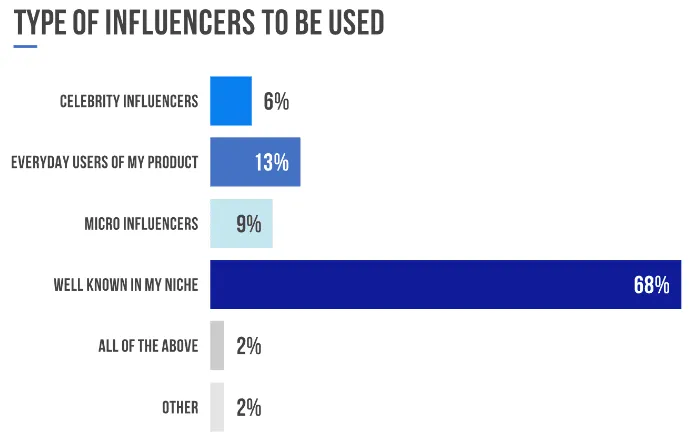
Source: Referralrock
Advantages of Macro-Influencers
Due to its substantial follower base, macro-influencers offer a wide and extensive reach for brands and businesses. This advantage is characterized by:
Broad Reach and Exposure
Macro-influencers typically have a large and diverse follower base, often numbering in the hundreds of thousands or even millions which helps with increased social media exposure
Their extensive reach allows brands to connect with a wide-ranging audience across different demographics, geographies, and interests.
The potential for increased visibility can significantly boost brand awareness and engagement.
Established Credibility and Influence
Macro-influencers have usually built a strong personal brand over time, earning the trust and respect of their followers.
Their credibility and expertise in specific niches or industries make them effective endorsers for products or services.
Partnering with macro-influencers can lend authenticity and authority to a brand's message.
Potential for Viral Impact
Due to their larger following, macro-influencers have a more significant potential to create viral content that can rapidly spread across social media platforms.
Viral content generated by macro-influencers can lead to heightened brand visibility and engagement, potentially reaching millions of viewers.
This viral impact can amplify marketing campaigns and increase the likelihood of user-generated content and word-of-mouth recommendations.
Successful Campaigns using Micro-influencers
Micro-influencers have become a popular choice for brands looking to connect with niche audiences and drive engagement. They often have a more dedicated and authentic following than macro-influencers or celebrities. Here are some successful campaigns that have utilized micro-influencers effectively:
Sperry's Theater Camp Movie
Sperry, a shoe and clothing brand showcases a successful marketing strategy. Wherein Sperry collaborates with @theatercampthemovie to promote a tailored selection of shoes. It is for a specific audience interested in theater and camping, utilizing micro-influencers and social media for effective outreach.
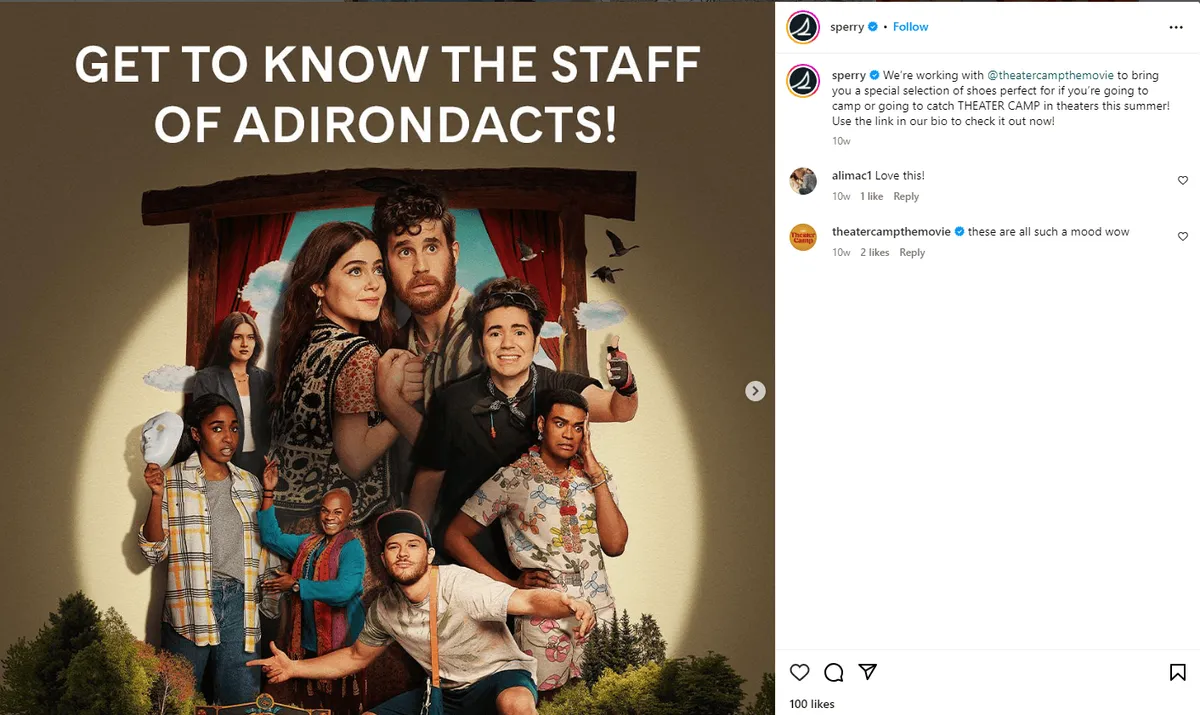 Source: Instagram
Source: InstagramHelloFresh's Meal Kit Promotion
HelloFresh, a meal kit delivery service, partnered with food and lifestyle micro-influencers to create content around their product. Micro-influencers shared their cooking experiences with HelloFresh's meal kits, providing authentic and relatable recommendations to their followers. This campaign increased brand awareness and drove customer engagement.
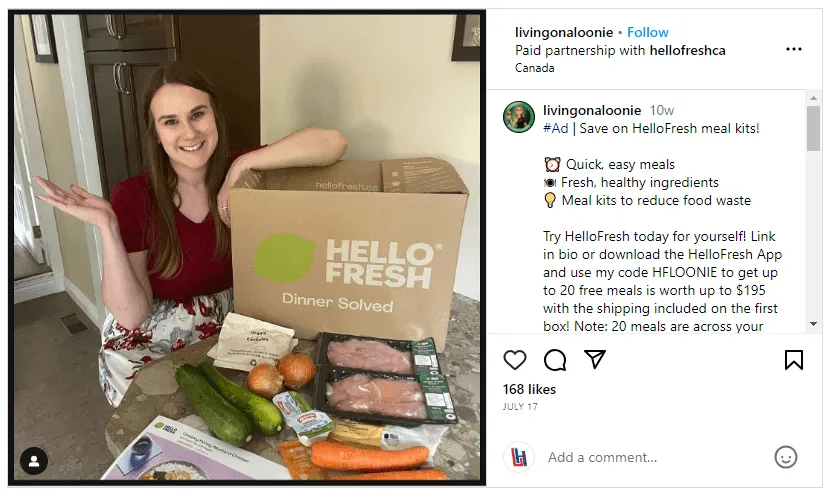 Source: Instagram
Source: InstagramGlossier's Beauty Products
Glossier, a cosmetics brand, primarily utilizes micro-influencers to promote its products. These influencers are often customers who genuinely love the brand and its products. By reposting user-generated content from micro-influencers, Glossier has created a strong sense of community and trust among its audience.
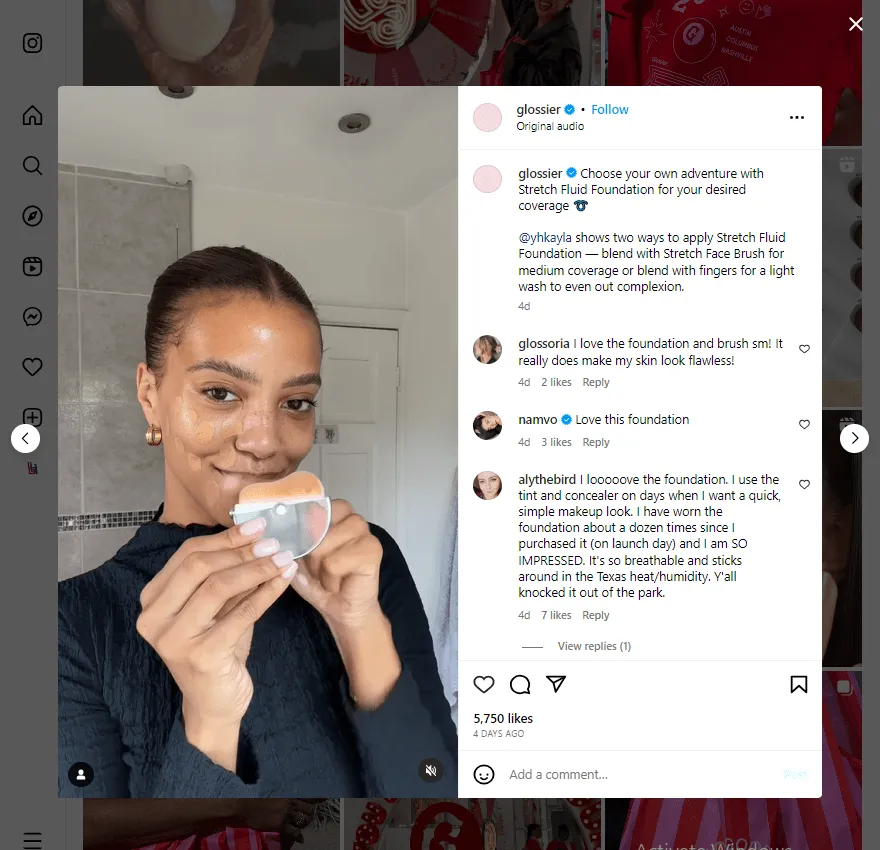 Source: Instagram
Source: InstagramDaniel Wellington's Micro-Influencer Campaign
The watch brand Daniel Wellington achieved immense success by collaborating with micro-influencers. They gifted their watches to a large number of fashion and lifestyle micro-influencers, who, in return, posted high-quality photos wearing the watches on their Instagram accounts. This strategy helped Daniel Wellington gain widespread exposure and credibility among their target audience.
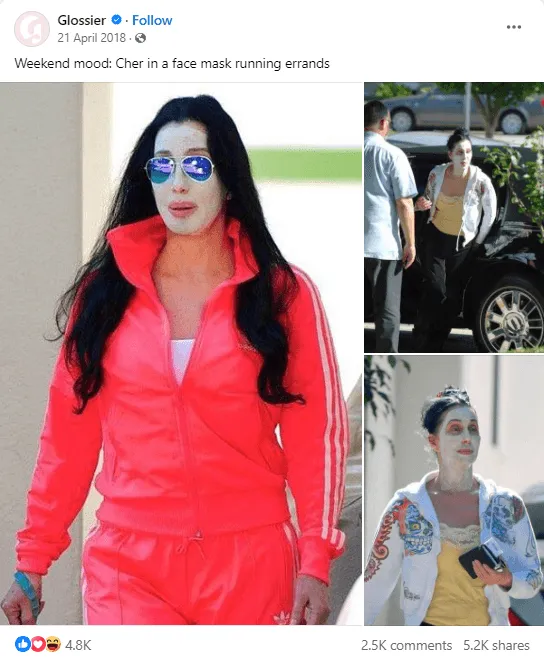
Successful Campaigns using Macro-influencers
Macro-influencers, typically have a large following on social media platforms and can be instrumental in running successful marketing campaigns.
Here are some examples of successful campaigns that have utilized macro-influencers:
Nike and LeBron James:
Nike has a long history of collaborating with macro-influencers, including LeBron James. They launched a campaign featuring LeBron James to promote their shoes, basketball, and lifestyle products. This partnership leveraged LeBron's massive following and his status as one of the greatest basketball players of all time.
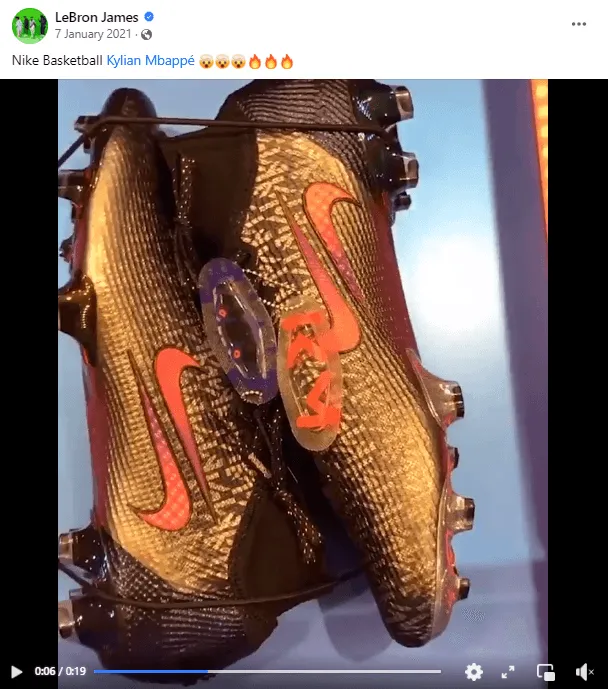 Source: Facebook
Source: FacebookL'Oréal and Eva Longoria
L'Oréal partnered with actress Eva Longoria to promote their beauty products. Eva Longoria's influence in the entertainment industry and her social media presence made her an ideal choice for L'Oréal's campaign to reach a diverse and engaged audience.
 Source: Instagram
Source: InstagramBurberry and Naomi Campbell
Burberry collaborated with supermodel Naomi Campbell and singer Kanye West for a campaign showcasing their fashion collections. Naomi Campbell's status as a fashion icon and her extensive reach in the fashion industry helped Burberry generate buzz and credibility.
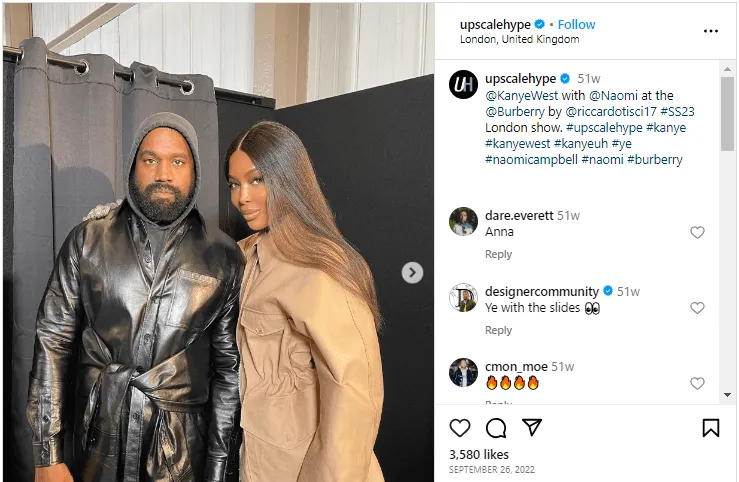 Source: Instagram
Source: InstagramCalvin Klein and Kendall Jenner
Calvin Klein enlisted model and reality TV star Kendall Jenner and other famous actors for their new campaign. Kendall Jenner's strong social media presence and her role in the Kardashian-Jenner family made her a strategic choice to reach a younger and fashion-conscious demographic.
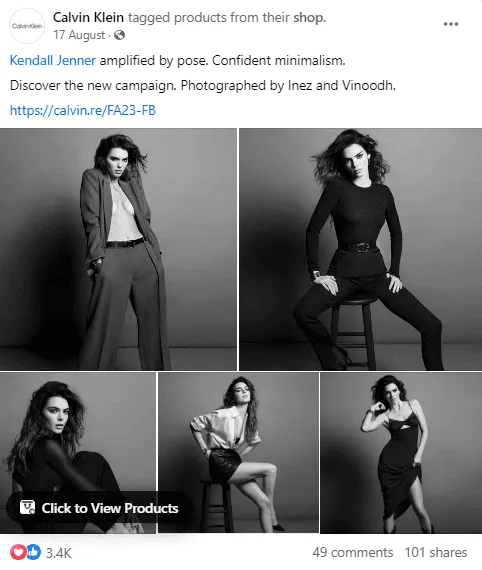 Source: Facebook
Source: FacebookChoosing the Right Influencer for Your Campaign
Choosing the Right Influencer involves evaluating campaign goals, understanding your target audience, weighing the pros and cons of different influencer types, and making a decision based on your budget and campaign objectives. Here are the key points to consider in this process:
Evaluating campaign goals and target audience
Define clear campaign objectives (e.g., brand awareness, product promotion, engagement).
Identify your target audience's demographics, interests, and behaviors.
Weighing the pros & cons of each influencer type
Macro-Influencers
Pros:
Broad reach and high visibility
Established credibility
Suitable for broader campaign objectives
Cons:
Expensive partnerships
May lack authenticity with younger audiences
Micro-Influencers
Pros:
Authenticity and strong niche audiences
Cost-effective collaborations
High engagement rates
Cons:
Limited reach compared to macro-influencers
May require multiple partnerships to reach a larger audience
Budget and campaign objectives
Assess your budget constraints and allocate resources accordingly.
Consider the cost-effectiveness of each influencer type in relation to your campaign objectives.
Remember that a mix of influencer types may be beneficial for reaching different segments of your target audience.
Conclusion
The decision to collaborate with either micro-influencers or macro-influencers for a social media campaign ultimately depends on a brand's specific goals, target audience, and budget.
Selecting the appropriate influencer type necessitates a thoughtful evaluation of campaign objectives, desired reach, and the level of personal connection required with the audience. Striking a balance and tailoring the approach to suit the unique needs of the campaign will optimize the potential for successful influencer collaborations and ultimately drive brand growth and engagement.
Related blog posts
The Hidden Flaws in Search Volumes and How to Solve Them
Learn how AI Search Volume delivers reliable search volumes by combining GKP, GSC, and Trends so that you can prioritize the right keywords.
1 July 2025
AI Overviews Are Taking Over SERPs
From traffic drops to decreasing CTRs, AI Overviews are shaking up SEO. Learn what is happening and how AccuRanker helps you track AIO.
25 June 2025
How AccuRanker’s AI Models Fix Inaccurate SEO Data
Struggling with unreliable SEO data? Discover how AccuRanker’s CTR, Search Intent, Search Volume, and Share of Voice deliver accurate insights.
1 June 2025




